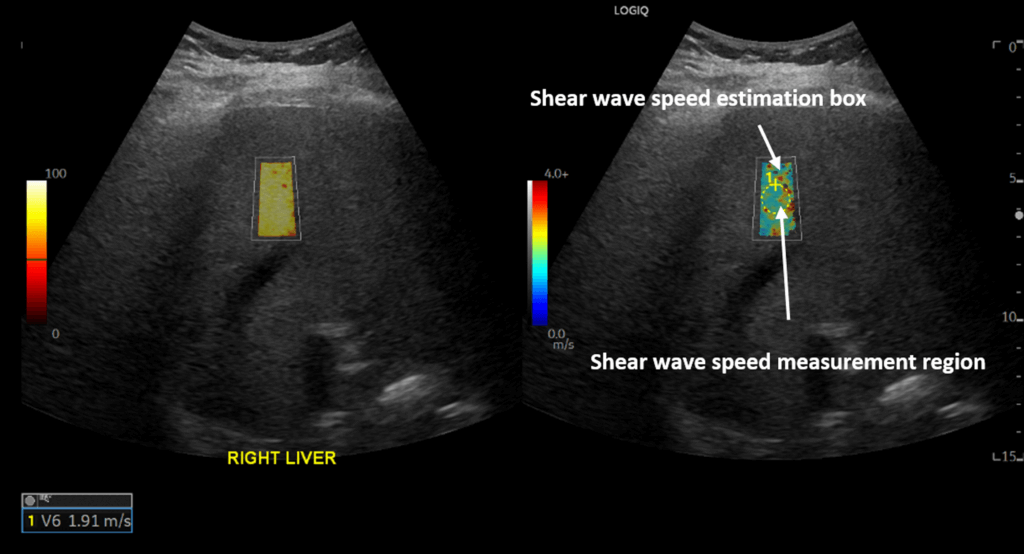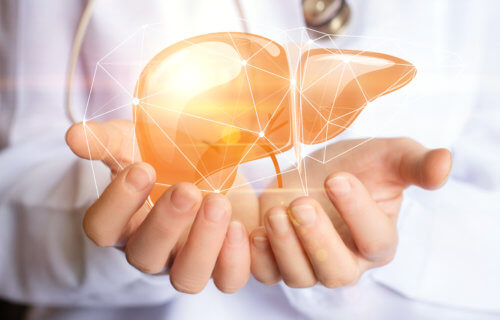BOSTON — COVID-19 infections are causing liver damage lasting months after diagnosis, according to new research. Researchers at Massachusetts General Hospital discovered COVID-positive patients had a “statistically significant” higher liver stiffness than the rest of the population.
Liver stiffness could indicate long-term liver injury such as inflammation or fibrosis, the buildup of scar tissue in the liver. Healthier liver tissue diminishes over time causing the liver to stop functioning properly, and in severe cases progressive fibrosis can lead to liver cancer or failure.
Dr. Firouzeh Heidari, a research fellow at the hospital, says their findings show that damage caused by a the SARS-CoV-2 virus persists for a long time. “Our study is part of emerging evidence that COVID-19 infection may lead to liver injury that lasts well after the acute illness,” she says in a statement to the Radiological Society of North America. “We don’t yet know if elevated liver stiffness observed after COVID-19 infection will lead to adverse patient outcomes.”
Researchers compared patients who had COVID-19 with two control groups, and each received an ultrasound shear wave elastography. The assessment measures how stiff tissue is.
COVID participants received a positive PCR test at least 12 weeks before the exam. There were 31 in the COVID group, and 50 in the control group who had the exam but had only tested negative on PCR tests during the pandemic. Another 50 people, who had an elastography exam before the pandemic, formed the second control group.
COVID-positive patients had a high median liver stiffness of 7.68 kPa, compared to 5.99 kPa stiffness in those who didn’t have the ailment. Patients were organized into one of three groups, based on whether they received elastography and whether they tested positive.

“We are currently investigating whether the severity of acute COVID-related symptoms is predictive of long-term liver injury severity,” says Dr. Heidari. “We hope to enrich our existing database with additional patient data and a broader scope of co-variates to better understand the post-acute effects of COVID-19 within the liver.”
The team believe the higher median stiffness among the pre-pandemic control group, versus the pandemic control group, was due to referral patterns changing during the pandemic, and because the pandemic control group were older. The mean age of Covid-positive group was 53.1 years, 55.2 years for the pandemic control group, and the pre-pandemic cohort were on average 58.2. In total, 67 were women.
In the COVID-positive group the elastography exams happened on average 44 weeks after a positive PCR result.
The research was presented at the annual meeting of the Radiological Society of North America.
South West News Service writer Pol Allingham contributed to this report.

And what are the stats for unvaxxed vs. vaxxed?
THIS!
They blame COVID for vax injuries. They do it on purpose. It is sickening.
Do any of these studies ever break down whether the study participants are vaccinate? I would think this would be an important criteria to see whether it is the actual Covid virus infection alone that causes this liver damage or whether it is the vaccine plus post vaccine infection.
It would be helpful to also know the covid vaccination status of each person studied. Anecdotally, I know many people who have developed severe liver problems, including liver cancer, after they have been vaccinated several times. Since vaccinated people get covid just as much as unvaccinated people, we don’t know if these people who had a positive PCR test tended to share a communality of being vaccinated or not. As usual, it’s the elephant in the room – or the study.
Does remdesivir have anything to do with it?
This is such a small percentage that it is not news worthy. The CDC and other doctors need to take a rest from these stupid scare tactics.
They don’t no how want to discourage vaccination by linking it to possible liver damage. Especially because scientific research takes years to be done properly. Research papers need to be peer reviewed. Results need to be replicated by others.
Too many people have a tendency to misread/half-read/make up stuff and then talk with the “authority” of a cracker-jack Phd. Silly persons love to listen to such people and turn the foolishness they hear into “common knowledge” when it is no such thing.
All of this could have been avoided if some idiots had not done “gain of function research.”
If we ever decide to correct this deficiency in the biological research community, I think we know where to start.
NOPE, the vehicle for hepatic injury is the “safe and effective,” not SARS 2 itself.
My husband just died. He was not obese, never drank alcohol in his life, was diabetic. He was 93 and fell at home, took him to hospital said he had broken a pelvic bone, Hospital said he needed to go to rehab where he caught a severe case of covid-19. He was very sick and we took him back to hospital and they sent him home with rehab coming to help him walk. He was doing very good. Noticed one day while giving him a shower that he was yellow. Took him back to hospital where he was diagnosed with cirrhosis of liver.
Hello Ruth, I am sorry for your loss.
In the UK the National Health Service are now sending out trucks into the community to test people for liver disease to prevent cancer. They have never done this before . There is obviously a cause for this increased risk in the population of liver damage warranting this national action and we all know what it is either contracted naturally or injected.
Why do you continue to lie about this? We all know it’s the vaccine that is causing the damage and you are participating in murder but pushing this lie.
I was diagnosed with Cirrhosis of the liver a year ago after having a Fibroscan, i was still very tired from COVID and my legs were painful, a blood test showed abnormal readings for my liver. When i was hospitalized my lungs were so furred up, my kidneys were not working properly so I was on my way to intensive care to be put into an induced coma. Although I have come out the other side i do believe my liver has been affected by COVID, yes i drink wine socially but after still having long COVID symptoms, surely, this must be related, any comments would be so appreciated, not that it matters but my age is 57.